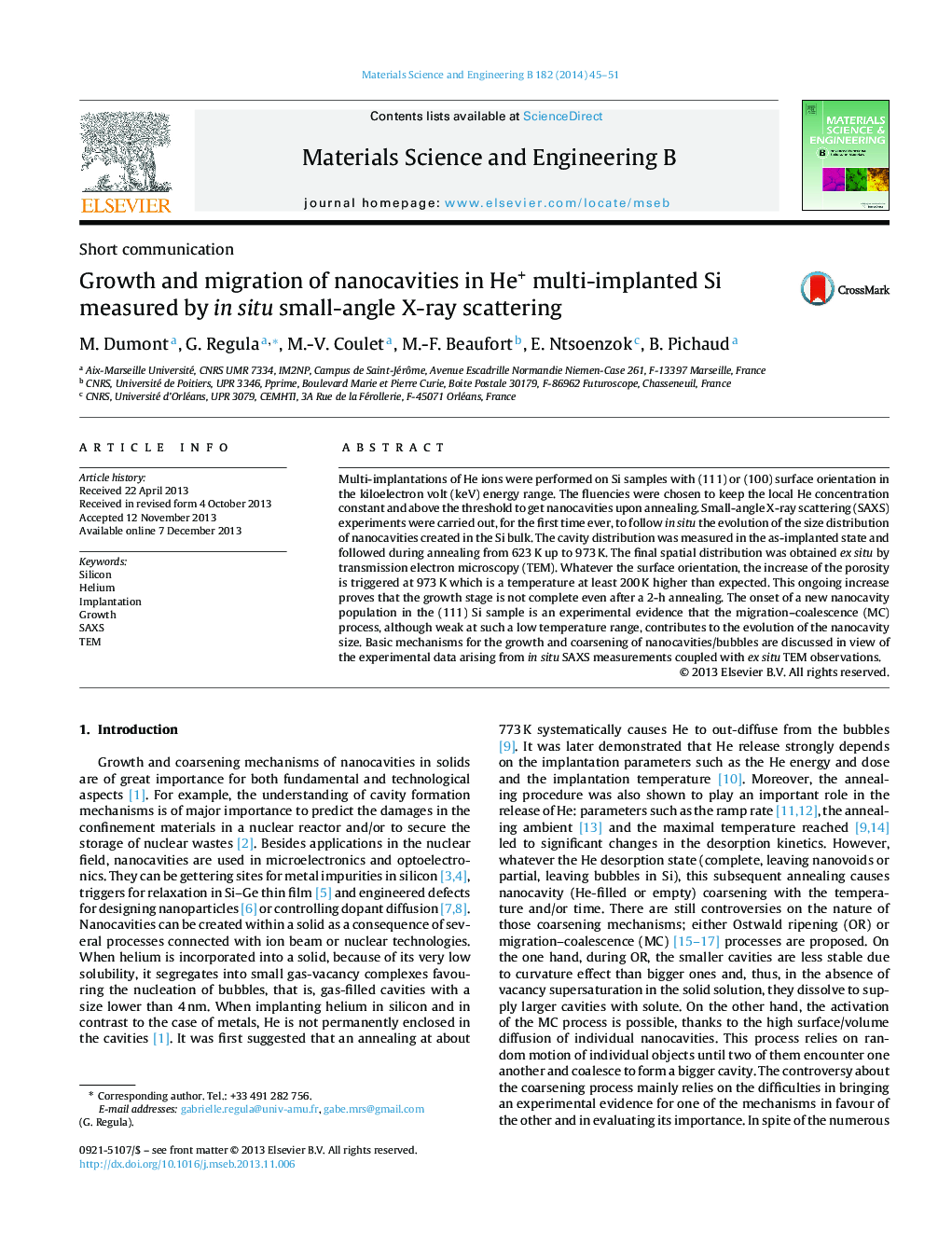| Article ID | Journal | Published Year | Pages | File Type |
|---|---|---|---|---|
| 1528740 | Materials Science and Engineering: B | 2014 | 7 Pages |
Abstract
Multi-implantations of He ions were performed on Si samples with (111) or (100) surface orientation in the kiloelectron volt (keV) energy range. The fluencies were chosen to keep the local He concentration constant and above the threshold to get nanocavities upon annealing. Small-angle X-ray scattering (SAXS) experiments were carried out, for the first time ever, to follow in situ the evolution of the size distribution of nanocavities created in the Si bulk. The cavity distribution was measured in the as-implanted state and followed during annealing from 623Â K up to 973Â K. The final spatial distribution was obtained ex situ by transmission electron microscopy (TEM). Whatever the surface orientation, the increase of the porosity is triggered at 973Â K which is a temperature at least 200Â K higher than expected. This ongoing increase proves that the growth stage is not complete even after a 2-h annealing. The onset of a new nanocavity population in the (111) Si sample is an experimental evidence that the migration-coalescence (MC) process, although weak at such a low temperature range, contributes to the evolution of the nanocavity size. Basic mechanisms for the growth and coarsening of nanocavities/bubbles are discussed in view of the experimental data arising from in situ SAXS measurements coupled with ex situ TEM observations.
Related Topics
Physical Sciences and Engineering
Materials Science
Electronic, Optical and Magnetic Materials
Authors
M. Dumont, G. Regula, M.-V. Coulet, M.-F. Beaufort, E. Ntsoenzok, B. Pichaud,
